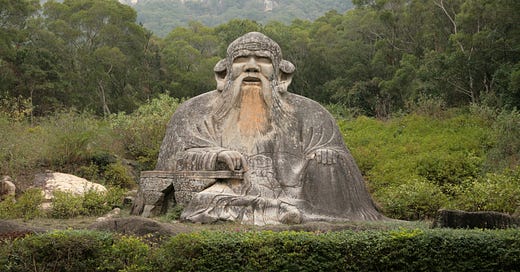There is a being [wu] – formless, complete in itself [hun] –
Preceding Heaven and Earth
Tranquil, vast, standing alone, unchanging
It provides for all things yet cannot be exhausted
It is the mother of the universe
I do not know its name
so I call it “Tao”
Forced to name it further
I call it
“The greatness of all things”
“The end of all endings”
I call it
“That whi…
Keep reading with a 7-day free trial
Subscribe to The Pragmatic Mystic to keep reading this post and get 7 days of free access to the full post archives.



